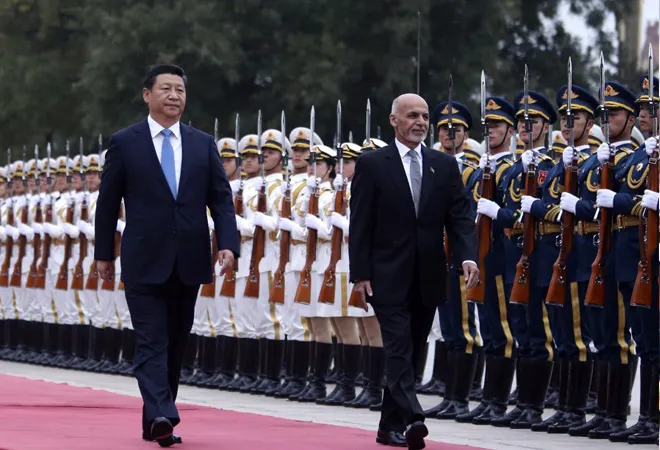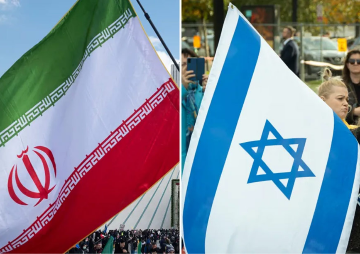 This is the sixty seventh part in the series
This is the sixty seventh part in the series The China Chronicles.
Read all the articles here.
Given the dysfunctional state of affairs in war-torn Afghanistan and the country’s strategic location, it is unsurprising to witness a fast growing Chinese interest in the country. The progressively deteriorating security situation in Afghanistan, and the potential risks that it could pose to Beijing’s long-term economic and strategic endeavors, is an unsettling prospect for China. The geographical proximity between Afghanistan, and the Muslim Uyghur province of Xinjiang in China, is however, the most crucial motivation for greater Chinese involvement in the country and more broadly the Central Asian region.
International media and intelligence agencies worldwide have been circulating reports pointing towards the creation of a Chinese military base in the Wakhan Corridor of the Badakhshan Province of Afghanistan, for a while now. Although China has not embarked building bases abroad historically, and has frequently denied rumors about building an Afghan “mountain brigade”, the example of Djibouti aptly testifies against its purported claims bringing to the fore China’s newly adopted strategy of leveraging economic influence to further its strategic objectives.
 Image: South China Morning Post
Image: South China Morning Post
On September 6, 2018, the Afghan Ambassador to Beijing stated in an interview with Reuters, that China was all set to train Afghan soldiers on Chinese soil, in an effort to counter Islamic State (ISIS) and Al-Qaeda militants attempting to infiltrate Xinjiang through the northeastern border of Afghanistan, the mountainous Wakhan Corridor. According to recent reports published by the South China Morning Post, despite denials, China is very much in the process of building the military training camp in Wakhan itself, and intends to station at least one battalion of troops at the base, accompanied with requisite weapons and military equipment, on completion of the project.
In March 2018, the International Crisis Group too released a report confirming the discreet presence of Chinese soldiers in the Gorno-Badakhshan Autonomous Region (GBAO) of Tajikistan that borders both the Wakhan Tract in Afghanistan, and the Xinxiang Province in China. Chinese military activity in Afghanistan therefore, needs to be understood by juxtaposing their projected strategic intent of countering Islamist radical forces targeting the Uyghur Muslims of Xinjiang, with their larger objective of expanding the scope of their strategic and economic influence across Central Asia.
At the recently held meeting between the foreign ministry delegations of China and Pakistan in Islamabad, a decision was made to extend the ambitious China-Pakistan Economic Corridor (CPEC) project to the “West”. While the specifics of the expansion were not made public, China’s foreign Minister Wang Yi had announced earlier this year that Afghanistan would certainly come under the purview of CPEC, which is part of President Xi Jingping’s flagship Belt & Road Initiative (BRI). Over the last three years, China has provided 70 million USD worth of military aid to Afghanistan, and 90 million USD worth of development assistance targeting the Badakhshan Province in particular.
Given the current strategic posture and policy predilections of Beijing, financial and material assistance to Afghanistan is likely to reflect an upward trend in the near future as well. By establishing a physical presence in the region, China will become far better equipped to broker a peace deal between the militant factions operating in different regions of Afghanistan and the government apparatus of the country, overtaking India as the frontrunner in the peacebuilding process, and taking a step towards acquiring international recognition as a legitimately benign global power. In keeping with its aim of leveraging influence in Afghanistan, China has convinced India jointly partake in a limited capacity-building program in Afghanistan, despite New Delhi being Kabul’ foremost development investor.
China however, seems to be striving to achieve a diplomatic equilibrium of sorts. Unlike most other states, it is viewing the chronic instability in Afghanistan as an opportunity to make considerable strategic inroads, while at the same time, using diplomacy to synthesize a truce between the various warring entities in the region. Moreover, China has thus far fared well in retaining Pakistan as an “all-weather” ally, by consistently allaying Pakistani fears and insecurities regarding growing Sino-Afghan closeness, while simultaneously integrating Kabul in its strategic calculus.
Having said that, the most important factor leading to fast-paced militarization of Badakhshan is the threat that the exiled Uyghur fighters of the East Turkestan Islamic Movement (ETIM) operating out of Afghanistan pose to domestic stability in China. The Uyghur Muslim province of Xinjiang as it stands today, has been explicitly termed by Chinese authorities as the festering ground for three menacing evils their society is confronting – separatism, terrorism, and religious extremism. Adding to that, there exists the dangerous possibility of radical elements hailing from foreign lands, using Afghanistan as a launch pad to establish insurgent links with the already vulnerable Uyghur inhabited areas of China. Military operations in Afghanistan will therefore be imperative for China to counter militant activities of groups such as ETIM, install a system of checks along their Western border, and secure a concrete security mechanism with Tajikistan, Afghanistan and Pakistan.
The aforementioned notwithstanding, China’s forward policy in the Wakhan Corridor needs to be assessed critically. Although at one level it seems to be motivated primarily by the threat of radicalization, its interest in the region is also conditional on the strategic role that Afghanistan is capable of playing in China’s B&RI in Central Asia. Despite vehement Chinese denials, there seems to be sufficient evidence available indicating a definite military build-up in the region, which creates both a challenge and an opportunity for China.
The views expressed above belong to the author(s). ORF research and analyses now available on Telegram! Click here to access our curated content — blogs, longforms and interviews.



 This is the sixty seventh part in the series The China Chronicles.
Read all the articles
This is the sixty seventh part in the series The China Chronicles.
Read all the articles  Image: South China Morning Post
Image: South China Morning Post PREV
PREV


